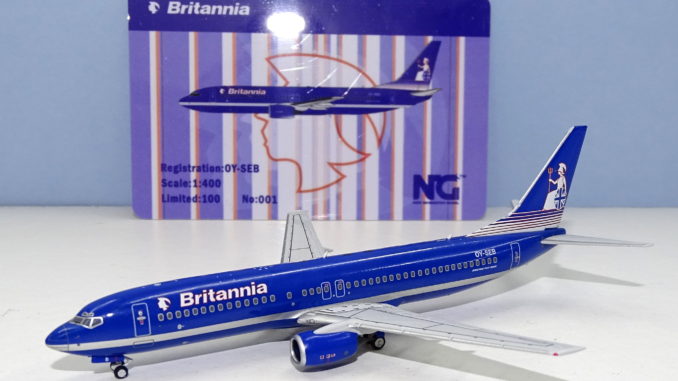
There seems no limit to what NG Models can do and impressively they have met all the deadlines they have set for themselves whilst at the same time welcoming feedback from collectors. In under a year they have gone from having a mould for a C-919 and a 757-200 to a family of moulds including the 787-9 and now the 737-800, with Tristars, Beluga XLs and others on the way. The 73H was a surprising choice but collectors are already clamouring for a wide variety of them. The first release was one I doubt many were clamouring for and this model was made as a run of only 100 for the recent 2018 Heathrow Collectors Fair.
THE REAL THING
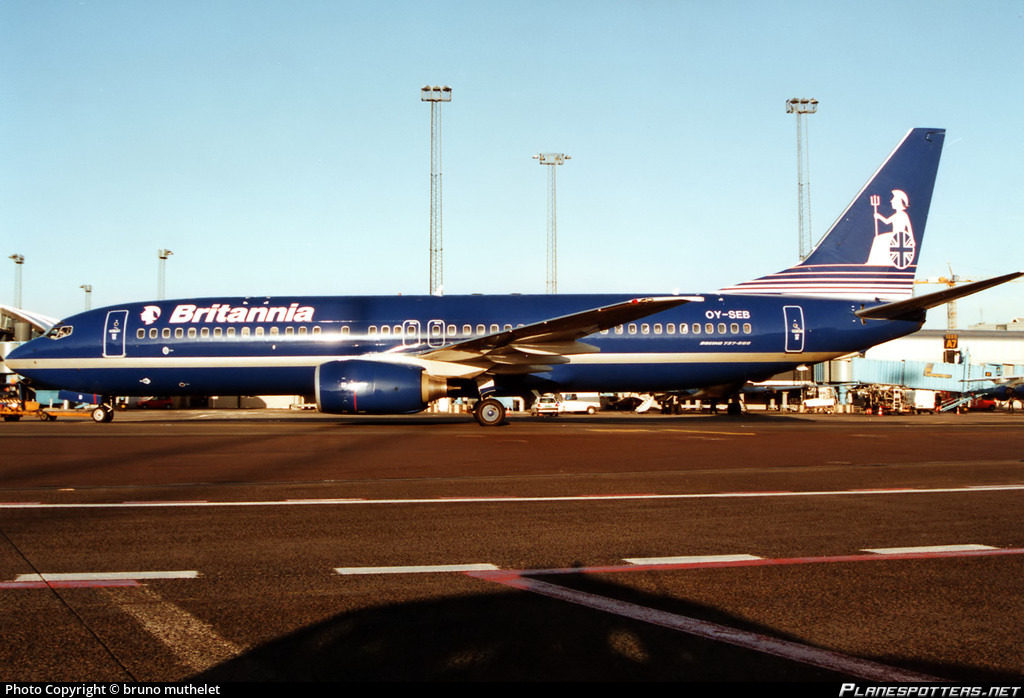
The upheavals in the charter airlines of Europe in the past 20 years, caused by the arrival of the Internet and the low-cost airlines it has fostered, has been nothing short of seismic. Most smaller operators have fallen by the wayside and even the giants have struggled. Consolidation has been the watchword which has seen the formation of the TUI group of airlines as well as Thomas Cook across Europe.
Part of the surviving TUI arm is TUIfly Nordic, which provides charter services for a range of TUI’s Scandinavian tourism operators across Denmark, Finland, Norway and Sweden. It was caught up in the regular strategy changes that befell the TUI group as it tried to align itself with a winning play and so has gone through a variety of name changes in its history.
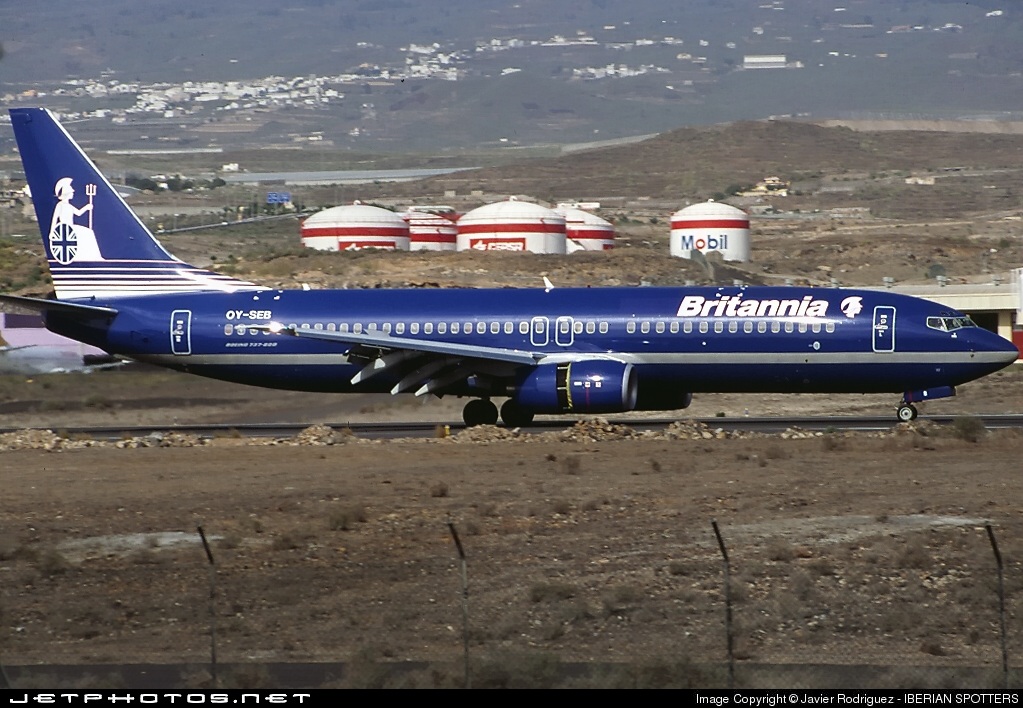
Originally it was formed in 1985 as part of the Swedish airline Transwede but in 1996 following a period of losses the charter and scheduled arms of the airline were split up and the charter side sold to Fritidsresor and rebranded as BlueScandinavia. This new identity only lasted until 1998 when Thomson bought the airline and it took the name of Thomson’s well-known British airline Britannia. Once again though this lasted only briefly as Thomson was purchased by Preussag (TUI) in 2000, although the inevitable rebranding of the airline didn’t happen until 2005.
As early as 1998 it was clear that consolidation of operations was the best foot forward to try and match the low-cost revolution. The Swedish and UK operations of Britannia were already moving in this direction and the introduction of the 737-800s provided an opportunity to manage the fleet as one across both airlines. To that end pilots from either country could fly aircraft registered in either country for either airline.
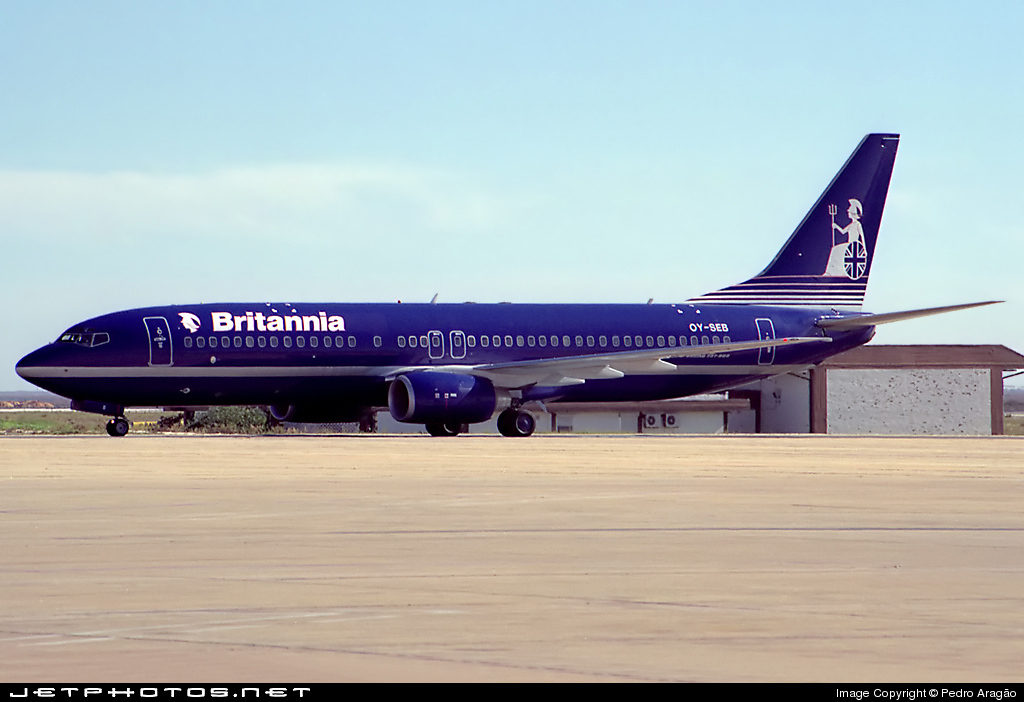
Britannia Nordic’s first two aircraft were actually sub-leased from Sterling European (who was leasing them from ILFC) and registered as OY-SEA and SEB. OY-SEB had joined Sterling on July 1998 wearing the dark blue colour variant. It actually suffered an embarrassing tail tip incident at Malaga early in its service: https://aviation-safety.net/wikibase/wiki.php?id=21782
Both this aircraft and SEA only operated for Britannia for a 6-month period prior to further series 800s joining in standard Britannia colours. Following the lease this frame’s service was varied.Sterling leased her to Blue Panorama in mid-2000 for 6 months and then flew her until they ceased operations in October 2008. Exported to the USA she then saw service as N781VA with Vision Air and Direct Air. In 2012 she joined Jeju Air in Korea and nowadays she’s plying her trade as PK-CMI with Sriwijaya Air in her 20th year of service.
THE MODEL
The format for my reviews is to split them into three key areas:
- The mould of the aircraft
- The paint and livery
- Printing and quality control
Each can get a maximum score of 10 for a section giving a maximum combined total score of 30.
THE MOULD
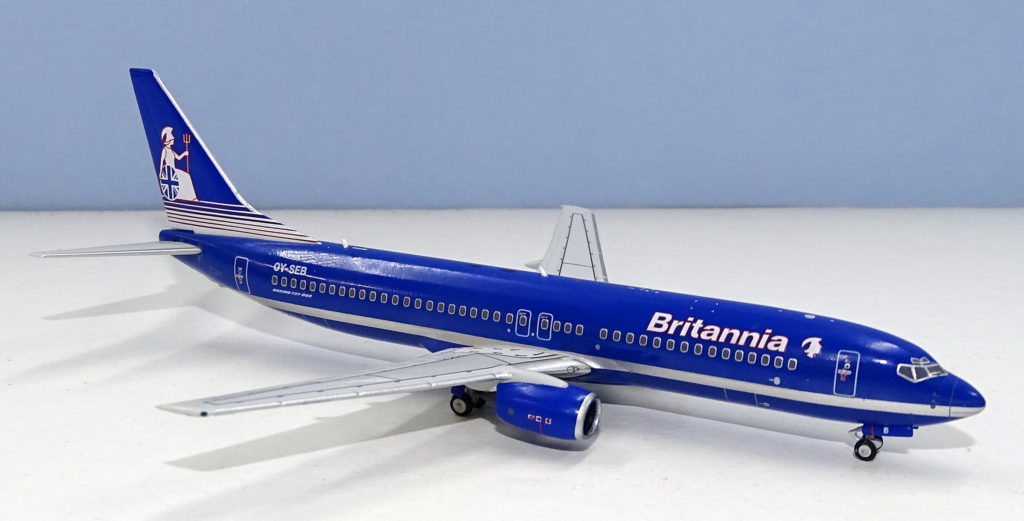
With this model NG have four active moulds and all of them are world-beaters in their class. The 737 next generation series has a selection of moulds available for it already but they run from poor to pretty good with none truly capturing the actual look of the aircraft across the board. The best of the bunch is the Panda Models version (also briefly used by Aeroclassics) but frankly this mould easily beats it.
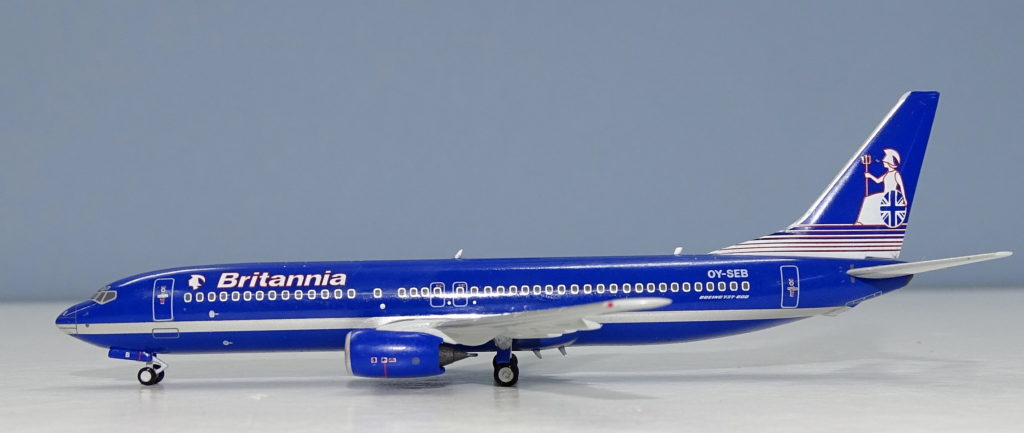
The most difficult areas for all the existing moulds have been the cockpit/nosecone and the engines/engine pylons. The NG mould has a beautiful and accurate transition from cockpit to nose perfectly capturing the classic traditional Boeing shape.
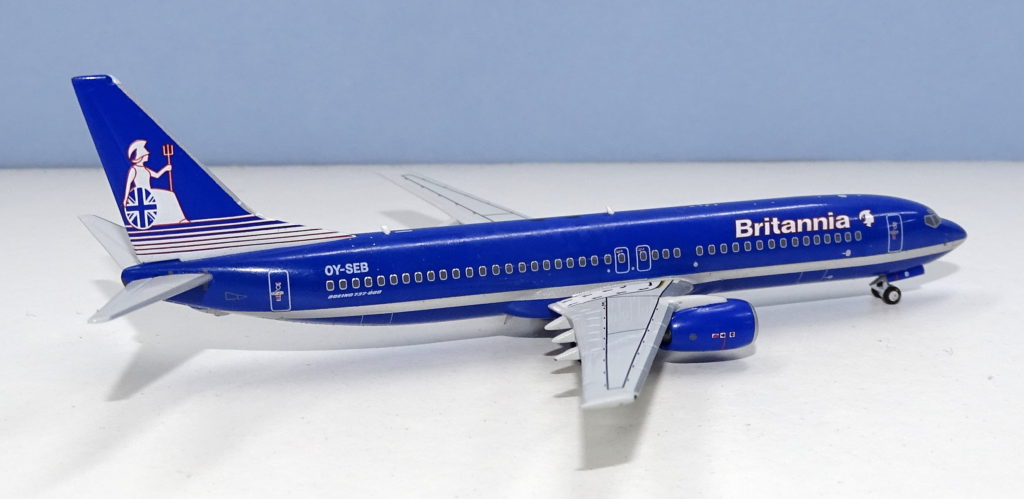
Even more impressive is the nosegear. The tyre and gear leg are well detailed and proportioned whilst the nosegear doors are a hallmark of attention to detail. Unlike most of the moulds, which have large rectangular slabs, these doors are the right size, angled properly, fit tightly to the fuselage and are not inset into it. They even have rounded upper corners like the real thing.
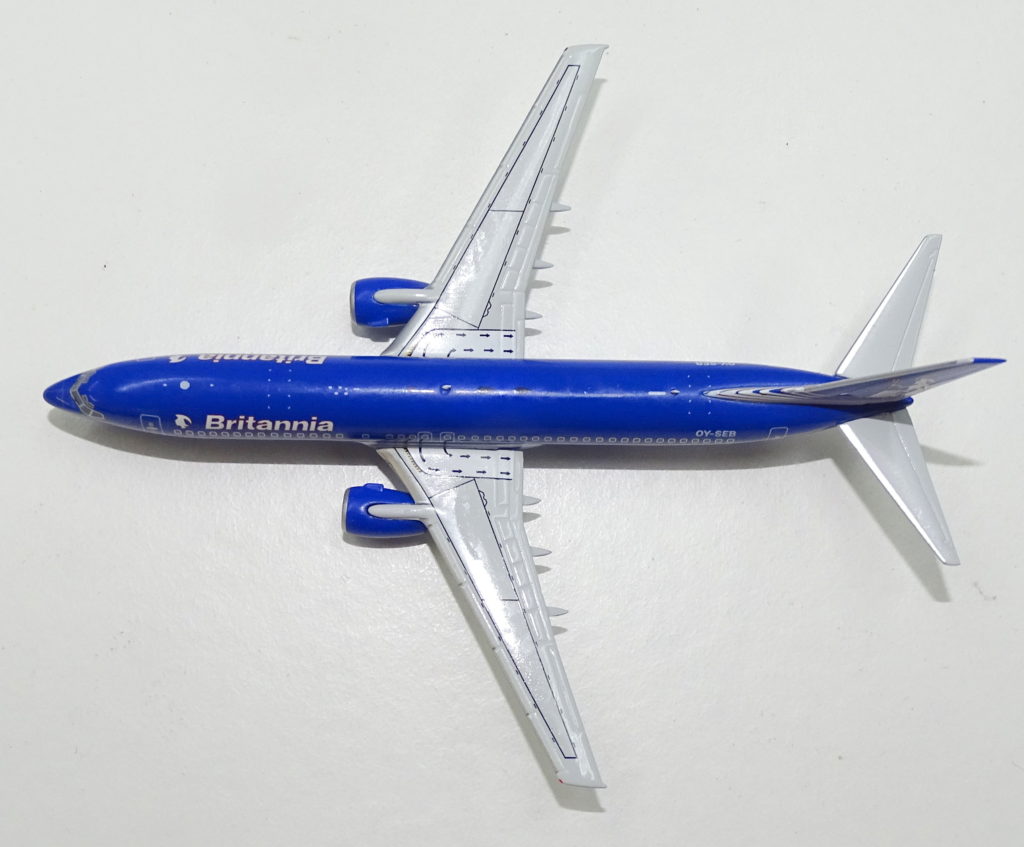
The rest of the fuselage is also picture perfect, whilst the wings slot in tightly to the fuselage as they should. The engines and pylons are also impressive. None of the other moulds hold the engines high enough, which means in combination with an often poorly proportioned nose gear that the engines are too close to the ground. On this mould that is not a problem.

My only point of criticism for the entire mould is that the second stage of the engine exhausts is not entirely shaped correctly, but it is not enough to deduct a point for. The mould also has all four aerials including the pair near each other on the underside (one of which is often excluded on other moulds).
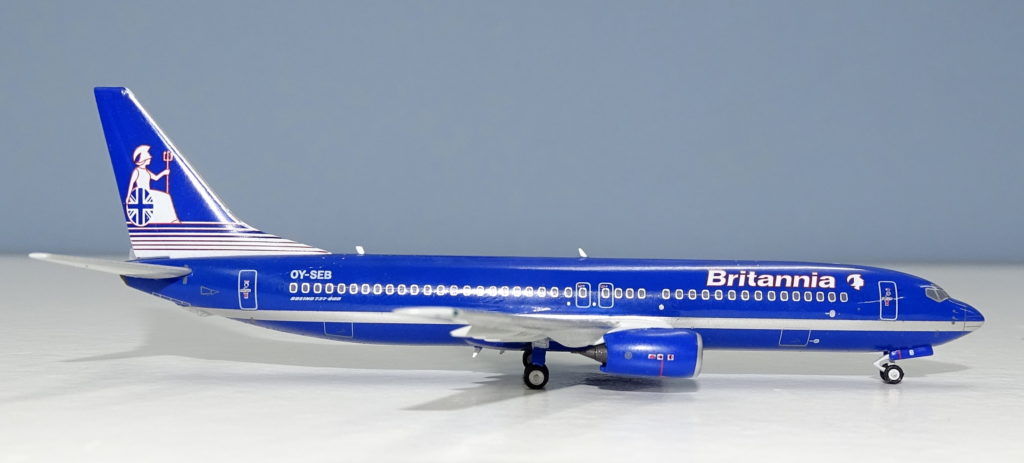
There are very few moulds that are as well made as this one. Not only is it the best 737NG but it is also the best 737 in this scale, and quite frankly a strong contender for the best Boeing mould in 1:400 scale period.
SCORE – 10
PAINT & LIVERY
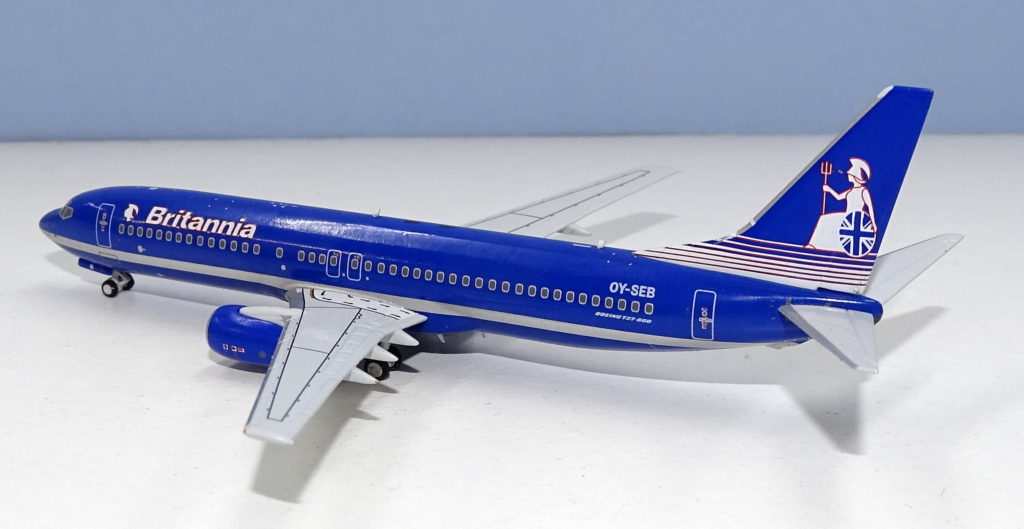
The blue colours worn by both these Sterling 800s in Britannia service actually matched the blue Britannia tail quite well and when the aircraft transferred over to Britannia, they continued to wear the base Sterling scheme with the Britannia tail and titles. It actually looked quite smart. I wonder if it is a coincidence that the shade of blue Sterling used for the two 737-800s appears to effectively match that of the Britannia tail. I suspect not.
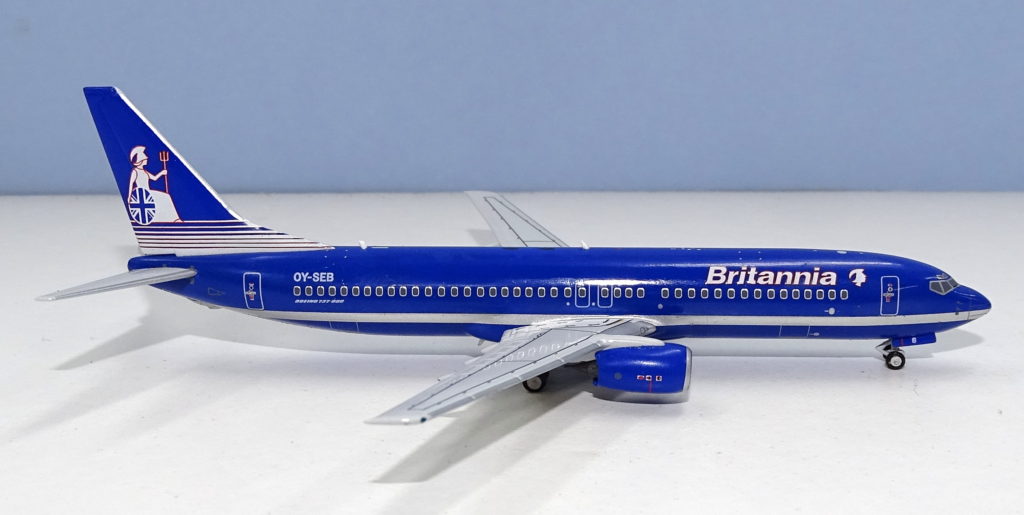
The application of this scheme is breathtakingly well done. The deep rich blue is well realized and the silver fuselage stripe clean, crisp and straight. The detailing of the female Britannia figure on the tail is very fine and includes some details that are often obscured in photos such as the breastplates lines where it meets the arms.
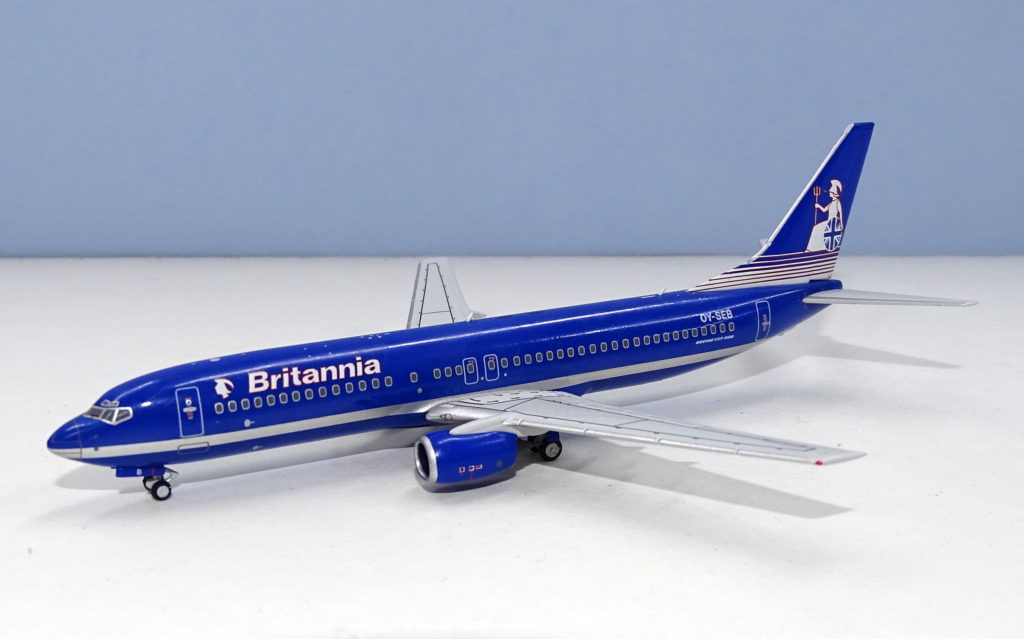
The placement of the titles and logo on the fuselage is accurate and the entire result is one of real artistry.
SCORE – 10
PRINTING & QUALITY CONTROL
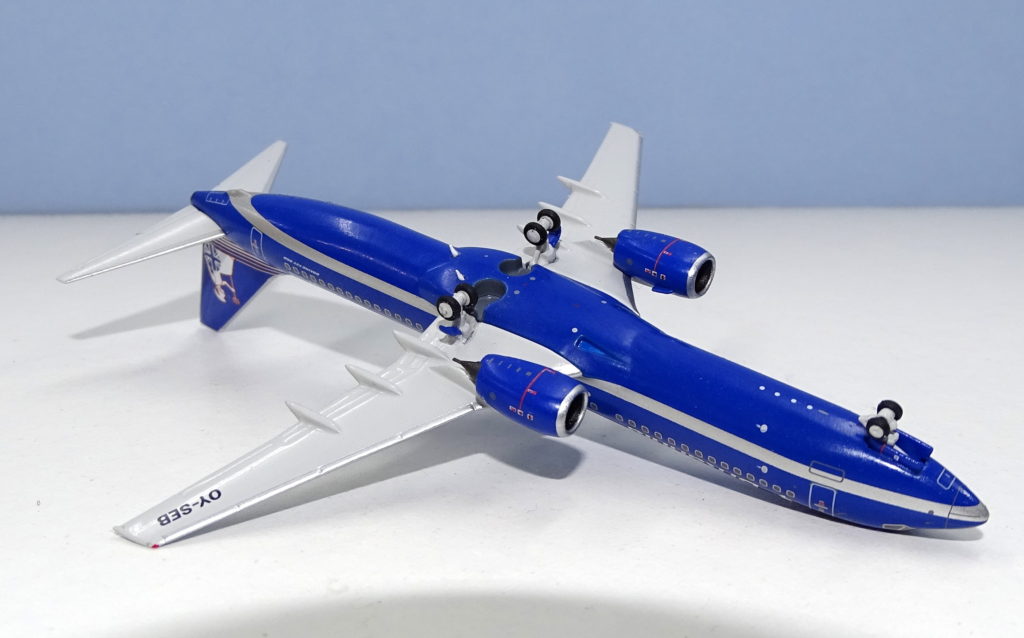
Dark base colour schemes obscure a lot of printing detail but this model still has it in spades. One of NG’s greatest strengths is its ability to recreate extremely fine details such as the nose radome lines and ‘cut here’ panel lines. The fine work continues with the engine rims and some beautifully detailed and painted fanblades.
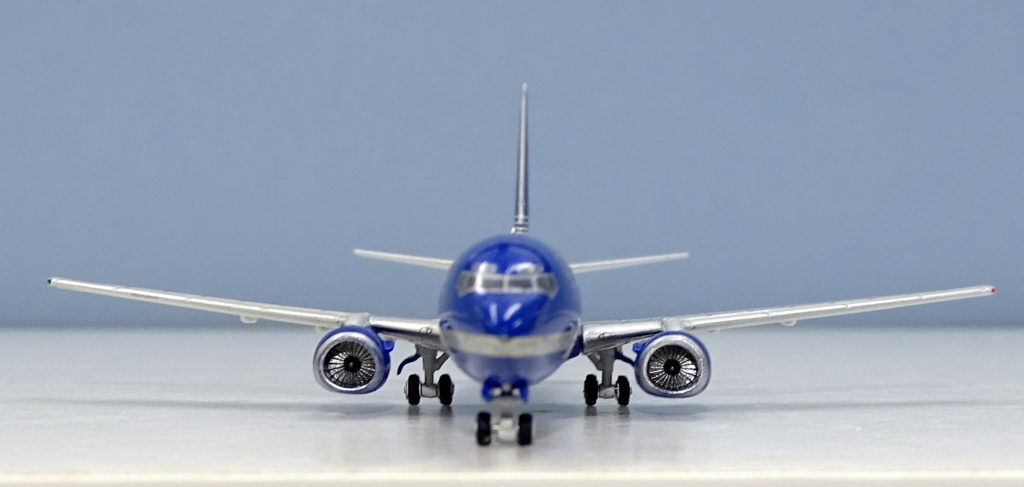
In a run of only 100 models you’d hope for perfection of construction and there is nothing to worry about here on that front.
SCORE – 10
CONCLUSION
When models are this good there isn’t that much to say other than to fawn over the brilliance on display. This model matches the example NG gave with the recent Honeywell 757 and for only the second time in my reviewing history I can do nothing but provide a 100% score. At this rate NG may put reviewers out of business as their engagement with the community, pain staking research and controlled precision construction come together to produce the highest quality models. The new 737-800 mould is a triumph but in addition so is the livery application. Only 100 of this model were made (and I am lucky to own no 1) but so far I have seen nothing to suggest that the larger standard runs and high number of releases has dented NG Models ability to produce quality across the board. These models deserve a wider audience.
FINAL SCORE – 30


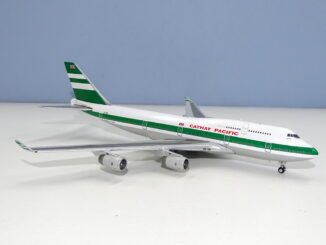
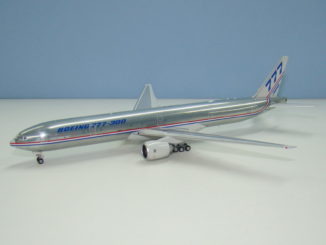

I can’t praise this company enough! They are extremely good at what they do, communicating with collectors to ensure accuracy, producing models much quicker and more accurate than the competition. While others surround themselves in secrecy and have to wait for a slot in the production lines, NG have produced their models quickly and efficiently and are with dealers ahead of any competition. This Britannia 737 is a typical example. I can’t wait to see what they’ll make next.